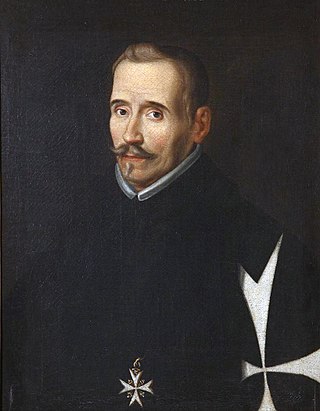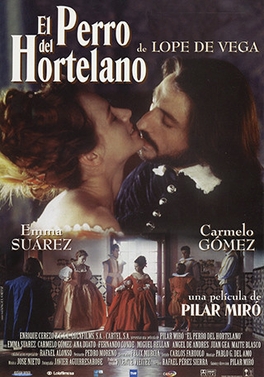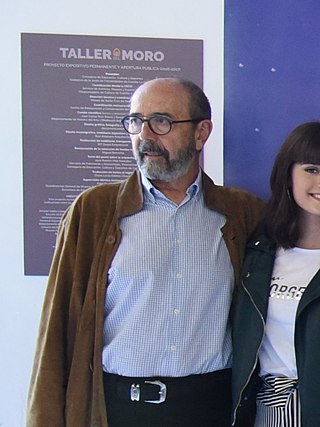Related Research Articles

Guillén de Castro y Mateo was a Spanish dramatist of the Spanish Golden Age. He was distinguished member of the "Nocturnos", a Spanish version of the "Academies" in Italy.

Félix Lope de Vega y Carpio was a Spanish playwright, poet, and novelist who was a key figure in the Spanish Golden Age (1492–1659) of Baroque literature. In the literature of Spain, Lope de Vega is second to Miguel de Cervantes. Cervantes said that Lope de Vega was “The Phoenix of Wits” and “Monster of Nature”.
A loa is a short theatrical piece, a prologue, written to introduce plays of the Spanish Golden Age or Siglo de Oro during the 16th and 17th centuries. These plays included comedias and autos sacramentales. The main purposes for the loa included initially capturing the interest of the audience, pleading for their attention throughout the play, and setting the mood for the rest of the performance. This Spanish prologue is specifically characterized by praise and laudatory language for various people and places, often the royal court for example, to introduce the full-length play. The loa was also popular with Latin American or "New World" playwrights during the 17th and 18th centuries through Spanish colonization.

The Dog in the Manger is a 1996 Spanish film written and directed by Pilar Miró and based on the 1618 play of the same name by Lope de Vega.
The second annual Altazor Awards took place on March 26, 2001, at the Teatro Municipal de Santiago.

The Widow from Valencia is a play written by the Spanish playwright Lope de Vega, who is considered part of the Spanish Golden Age of literature. The play was written circa 1600 as a result of Lope's visit to the city with his new patron, the future Count of Lemos. They were there for the marriage of the King Philip III with Margaret of Austria. However, the play was not published until 1620 in the fifteenth part of his Comedias, where it is dedicated to Marcia Leonarda, that is to say, to Lope’s beloved Marta de Nevares.
Fenisa's Hook is a play written by the Spanish playwright Lope de Vega, who is considered part of the Spanish Golden Age of literature. It was first published in 1617 in the eighth part of Lope de Vega's Comedias. Based on the tenth tale of the eighth day of Boccaccio’s Decameron, it has been called a picaresque play, works that exhibit an uncharacteristic moral freedom. It focuses on merchants, the circulation of bodies and merchandise, and the seductive power of art. Boccaccio's tale is about a trickster who is tricked. Lope uses Boccaccio's story for the main plot of his play, where Fenisa, a courtesan in Palermo attempts to woo the rich merchant Lucindo in order to gain his riches. A secondary plot includes Dinarda who is dressed as a man and has come to Palermo in search of the man who seduced her and left her behind. Fenisa ends up falling for this Dinarda who is disguised as don Juan de Lara. While Fenisa is able to trick Lucindo the first time around, he comes back to Sicily a second time and this time he tricks her. In the end, Dinarda finds and marries her Albano, while Fenisa is left without a spouse and without money.
Blanche of Castile was by birth a member of the Castilian House of Burgundy. She was the only child of Infante Peter of Castile and Infanta Maria of Aragon.

John of Castile, called the "el de Tarifa" was an infante of Castile and León. He was engaged in a decades-long fight for control over the Lordship of Biscay with Diego López V de Haro, the uncle of his wife.
José Fernández-Montesinos Lustau was a Spanish historian and literary critic belonging to the so-called Generación del 27, a generation he himself referred to as "this ill-fated, mistreated and dispersed generation of mine".

Teatro Español, formerly Teatro del Príncipe and Corral del Príncipe, is a public theatre administered by the Government of Madrid, Spain. The original location was an open-air theatre in medieval times, where short performances and some theatrical pieces, which became part of famous classical literature in later years, were staged. Its establishment was authorized by a royal decree of Philip II in 1565.
Punishment without Vengeance is a 1631 tragedy written by the Spanish playwright Lope de Vega at the age of 68, centred on adultery and a near-incestuous relationship between step-mother and step-son. The play is regarded as one of Lope’s supreme achievements.
Belisa may refer to:
Rafael Núñez Florencio is a Spanish historian, philosopher, and critic.
Yolanda García Serrano is a Spanish film director and writer, the winner of the 1994 Goya Award for Best Original Screenplay for the film All Men Are the Same.

Miguel Ángel Rellán García is a Spanish actor. He was the first actor to win a Goya Award for Best Supporting Actor for Tata mía at the 1987 edition. He made his feature film debut in El perro (1977). He became very popular to a television audience in Spain for his portrayal of history teacher Félix in Compañeros.
José María Marco Tobarra is a Spanish essayist and liberal-conservative opinion journalist.
Juan Francisco Fuentes Aragonés is a Spanish historian specialized in contemporary history.
Sebastian Francisco de Medrano was the president and founder of the Poetic Academy of Madrid, also known as the Medrano Academy, located on Leganitos street in Madrid. He was the commissioner of the Spanish Inquisition, acting as the official censor of comedies. He was also a poet, playwright of the Baroque period, chief chaplain, chief almoner, and priest at San Pedro el Real in Madrid, Protonotary Apostolic of the Pope, Apostolic Judge, and chaplain and treasurer for Gómez Suárez de Figueroa, III Duke of Feria.

Marina Mayoral Díaz is a Galician writer in Galician and Spanish.
References
- 1 2 Torres, Rosana (1 December 1995), "Jose Luis Castro llega al teatro de la Comedia con 'El acero de Madrid'" [Jose Luis Castro arrives at the theater of Comedy with 'El acero de Madrid'], El País (in Spanish)
- ↑ Rodríguez, Daniel Fernández. "Partes de comedias". Prolope (in Spanish). Retrieved 2018-08-27.
- ↑ De Armas, Frederick A (2013). "Lope de Vega. Comedias parte XI, tomos I–II. Eds. Laura Fernández and Gonzalo Pónton. Biblioteca Lope de Vega. Madrid: Gredos Editorial S.A., 2012. Xvi + 2100 pp. €40". Renaissance Quarterly. 66 (3): 1099–1101. doi:10.1086/673680. ISBN 978-84-249-3658-7. JSTOR 10.1086/673680.
- ↑ "Chronology". casamuseolopedevega.org. Retrieved 2018-08-27.
- ↑ Morley, S. Griswold (1945). "El acero de Madrid". Hispanic Review. 13 (2): 166–169. JSTOR 470095.